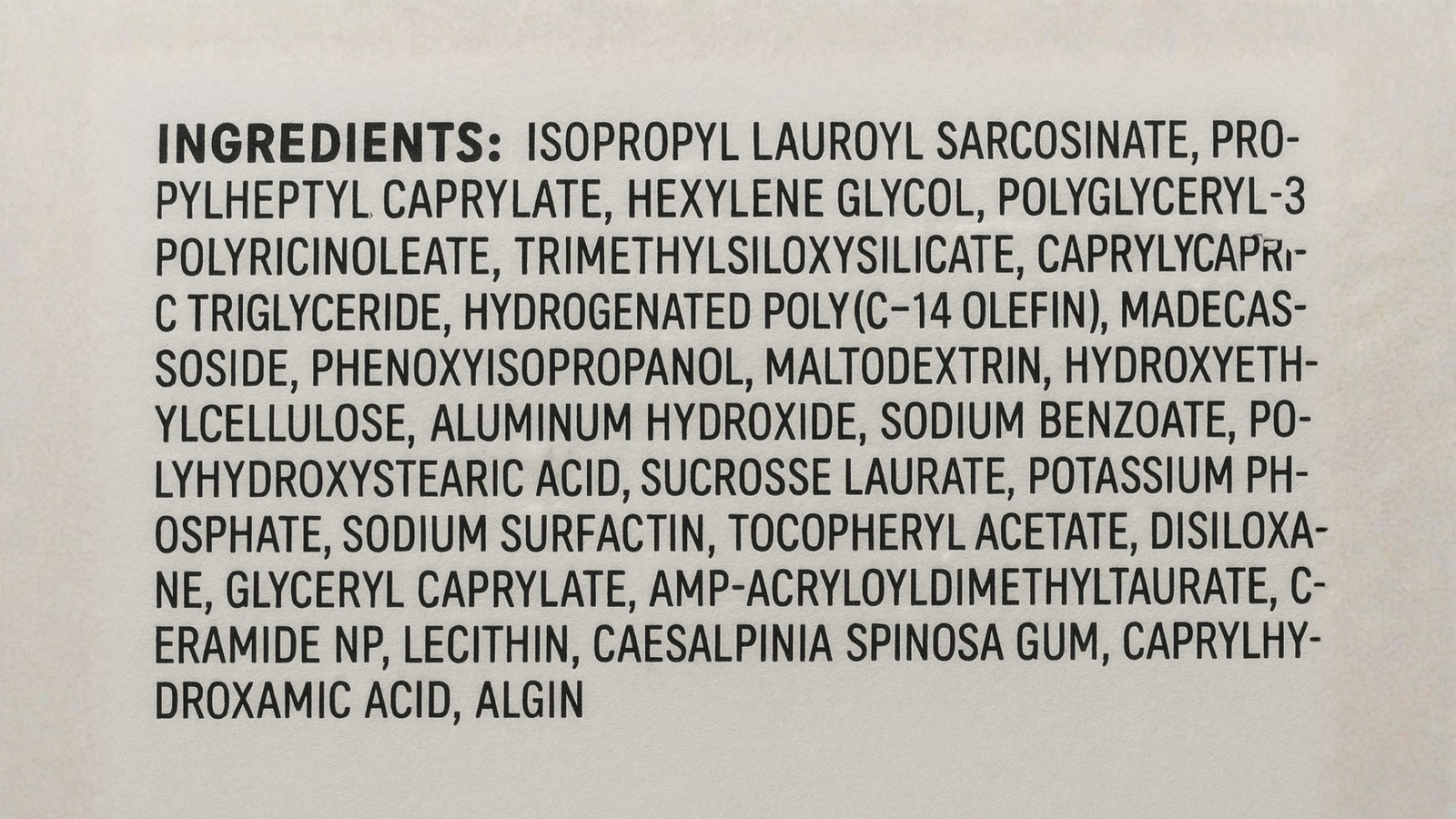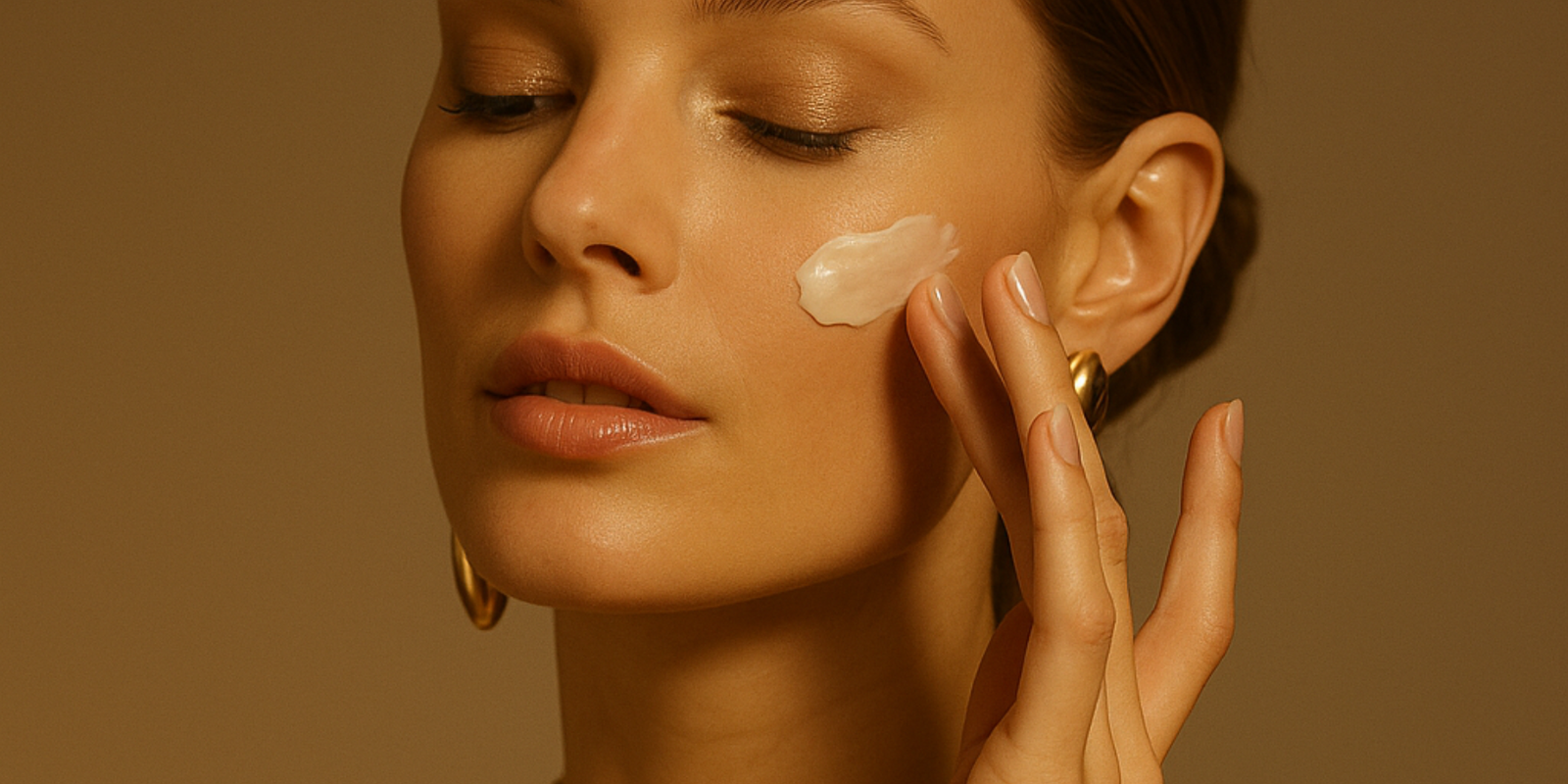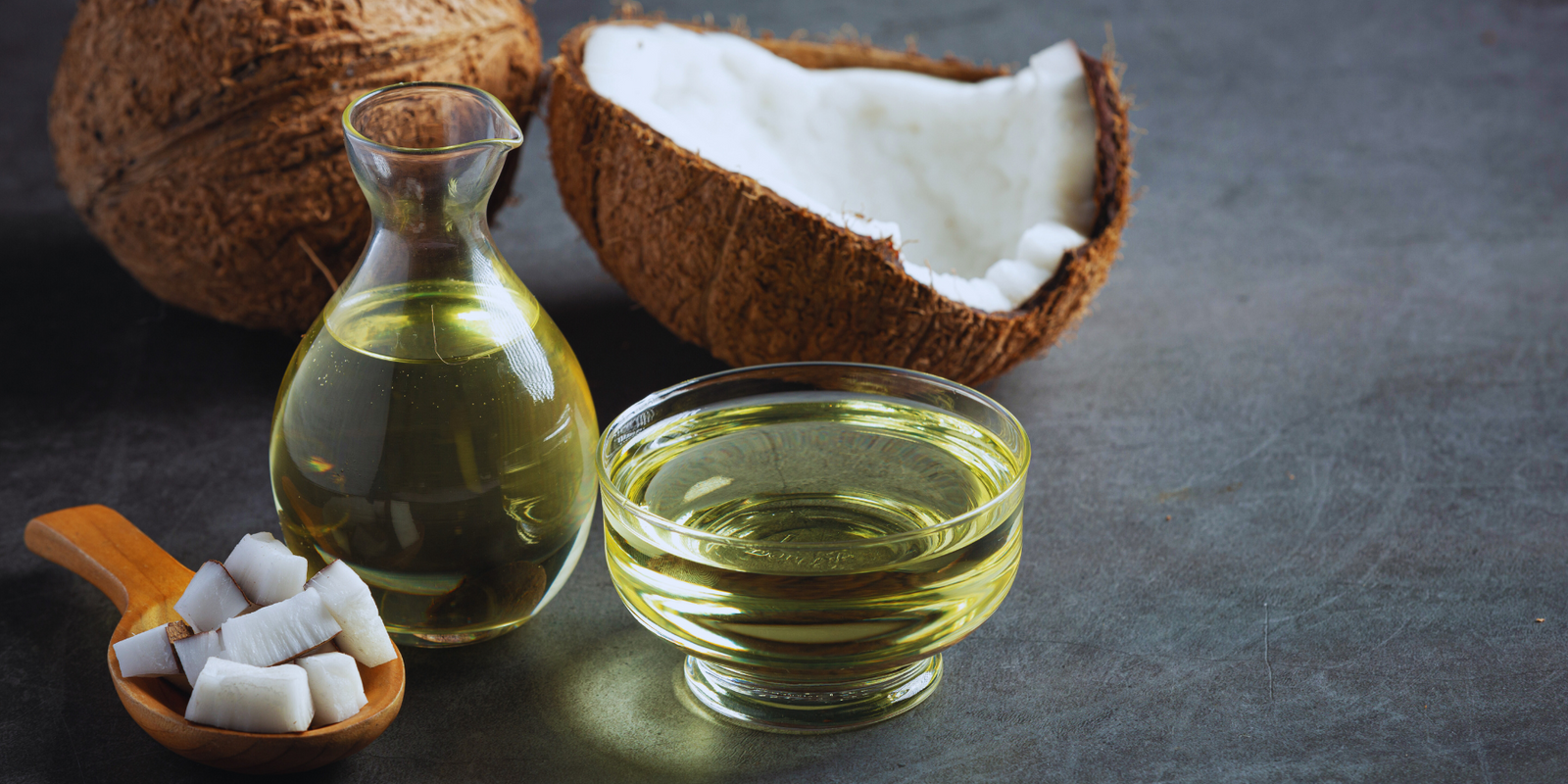EWG Verified & Leaping Bunny Certified | Free Gift $200+
EWG Verified & Leaping Bunny Certified | Free Gift $200+
The Top 10 Best (And Worst) Oils to Use On Your Face

I get asked all the time about using oils like avocado, olive, and coconut on the face—and the truth may surprise you. Not every “natural” oil is good for your skin. In this post, I break down the best and worst oils to use, what their comedogenic ratings really mean, and how to choose the ones that will actually nourish your skin instead of clogging it.
The Top 10 Best (And Worst) Oils to Use On Your Face
I’ve been formulating plant-based skincare for years, and one of the questions I get asked most often is: Which oils are good for your skin and which ones aren’t? The truth is, oils aren’t one-size-fits-all. Their chemistry, comedogenic rating, and how they interact with your skin’s barrier determine whether they’ll nourish and improve your skin health or clog pores and cause irritation.
In this post, I’m breaking down my personal go-tos and the ones I avoid for facial leave-on use. For each oil, I’ll share:
-
The reasoning for my recommendation, based on what the research says about its benefits or drawbacks.
-
Its comedogenic rating (0 = non-clogging → 5 = highly pore-clogging).
-
Who should use (or avoid) it.
-
How I suggest using it (and if I use it in Flora Mirabilis formulations).
I’ll also link to some related posts on coconut oil, seed oils, face oil mistakes, and essential oils if you want to go deeper. Let’s get into it.
Oils I Recommend
1. Sacha Inchi Oil

Why I recommend it:
Sacha Inchi is one of my favorite oils because it delivers a rare combination of high omega-3 (α-linolenic acid) and omega-6 (linoleic acid) in a base that feels incredibly light on the skin. In fact, it has the highest concentration of omega-3 fatty acids of any shelf-stable plant oil. (Flax has the most, but it oxidizes too easily to be practical for skincare.)
Studies show that Sacha Inchi improves skin hydration, has potent antioxidant capacity, and inhibits the enzymes that cause collagen and elastin breakdown, such as MMP-2, collagenase, and elastase. It’s been shown to have no inflammatory effect, so it’s well tolerated even by sensitive skin.
These mechanisms suggest real potential for maintaining firmness and elasticity over time, making it one of my favorite anti-aging oils to use for skincare.
Comedogenic rating:
0–1. Unlikely to clog pores.
Who should use it?:
All skin types, especially combination/oily, and mature/premature aging.
Suggested use:
Use this as a lightweight moisturizer on its own if you have oily skin, or layered under a heavier oil or moisturizer if you have dry skin.
We use Sacha Inchi as the primary base oil in our Holy Grail Face Oil because it creates a lightweight, fast-absorbing texture that leaves skin smooth, balanced, and supported with anti-aging benefits.
Related reading: See our post Sachi Inchi Oil: The Richest Source of Omega-3 for Radiant Skin
2. Apricot Kernel Oil

Why I recommend it:
Apricot Kernel Oil deeply nourishes dry skin and supports a smooth, healthy texture. It’s rich in omega-6 and 9, which help support skin-lipid barriers and make it naturally anti-inflammatory and soothing for sensitive or easily irritated skin. It also softens and conditions beautifully without feeling heavy or greasy. While it offers many of the same benefits you’ll find in the more commonly found almond oil, like rich unsaturated fatty acids and antioxidants that help maintain skin resilience, it carries a lower risk of allergenicity.
Comedogenic rating:
2. Unlikely to clog pores.
Who should use it?:
Dry, sensitive, or mature/prematurely-aging skin.
Suggested use:
For dry or sensitive skin, apply it on its own to deliver extra moisture. For oily skin that is dehydrated from cold weather or dry climates, add a few drops to a lighter-weight oil to moisturize without feeling too heavy.
Apricot Kernel Oil is another key ingredient in our Holy Grail Face Oil. It adds a touch of body to the lightweight formula and locks moisture in.
3. Argan Oil
Why I recommend it:
Argan Oil is one of my go-to base oils when I’m working with combination or stressed/depleted skin. It contains a rich mix of unsaturated and saturated fatty acids, meaning it softens and smooths while also supporting the skin’s structure and barrier. It has a pretty even ratio of omega-6 and omega-9 plus palmitic acid, which is naturally found in sebum and lends a more substantial skin feel.
Research shows that when applied topically, Argan Oil improves barrier function by reducing trans-epidermal water loss and increasing water content in skin. Because it also includes antioxidants and anti-inflammatory compounds, it calms stressed, irritated skin and helps maintain resilience.
Comedogenic rating:
0-1. Unlikely to clog pores.
Who should use it?:
Combination skin, stressed, irritated skin.
Suggested use:
Argan works well on its own if you’re looking for a full-bodied oil that has a cushiony feel without being too heavy. When added to a blend, it lends richness, stability, and a smoother texture to lighter oils.
4. Meadowfoam Oil
Why I recommend it:
Meadowfoam Oil is ideal for skin that’s prone to congestion, dehydration, or barrier imbalance. Its unique long-chain fatty acids give it an unusually lightweight, dry finish that helps dissolve excess sebum and buildup without clogging pores. Because it sits so well on the skin’s surface, it helps balance oil flow and maintain hydration without creating heaviness. It also forms a thin, breathable film that slows moisture loss and improves suppleness.
Beyond texture, it’s one of the most oxidation-resistant natural oils, meaning it stays fresh and stable even in complex blends. Its non-comedogenic nature and gentle lipid profile make it suitable even for those managing acne, helping calm inflammation while supporting clear, balanced skin.
Comedogenic rating:
1. Unlikely to clog pores.
Who should use it?:
Nearly all skin types, especially oily/acne-prone.
Suggested use:
Use Meadowfoam on its own, or in a blend of your choice to help dissolve pore congestion and soothe skin. It’s very similar to Jojoba in its lightweight, non-comedogenic nature, so if you can’t find Meadowfoam, Jojoba is a great substitute.
We use Meadowfoam in our Fountain Of Youth Cleansing Clay since it makes such a perfect cleansing oil with its pore cleansing and oil dissolving properties.
5. Maracuja Oil
Why I recommend it:
Maracuja Oil is ultra-light, fast-absorbing, and composed mostly of omega-6 linoleic acid, which is crucial for clear, balanced skin. Its high linoleic content helps regulate sebum and prevent the thick, sticky oil that can clog pores, making it excellent for oily or congested skin. Studies show that linoleic acid–rich oils like Maracuja support barrier repair and reduce comedone formation while delivering antioxidant protection from natural tocopherols and phenolics. The result is soft, hydrated, and visibly clearer skin without heaviness.
Comedogenic rating:
1. Unlikely to clog pores.
Who should use it?:
Oily, combination, or breakout-prone skin that needs moisture without heaviness.
Suggested use:
For oily skin, use it on its own to moisturize without a heavy or greasy sensation. For dry skin, it may not feel moisturizing enough, so mix it with a heavier oil.
Oils I Do Not Recommend for Daily Facial Leave-On Use
6. Avocado Oil
Why I don’t recommend it:
Avocado Oil is nutrient-dense, containing vitamins C and E along with carotenoids and phytosterols, but its dense, heavy texture can work against the skin rather than for it, especially in oily or acne-prone complexions. It absorbs slowly, often leaving a greasy film that can trap debris and contribute to congestion. The oil itself is also prone to a strong, sometimes unpleasant natural odor. Because it shares certain proteins with latex, those with a latex allergy or sensitivity should patch-test before use.
Comedogenic rating:
3-4. Likely to clog pores.
Who should avoid it?:
Anyone with combination or oily/acne-prone skin.
Suggested use:
If your skin is extremely dry, you may be able to use a very small amount of Avocado Oil on its own or in a blend with other oils successfully. It is much better suited as body oil, but since it is so slow to absorb, it can sometimes stain clothing.
7. Olive Oil
Why I don’t recommend it:
Olive oil is rich in oleic acid, which gives it a heavy, cushiony texture that can make dry or depleted skin feel softer at first. That short-term comfort is misleading, though. Too much oleic acid disrupts the skin’s lipid structure and weakens barrier integrity over time. Clinical research has shown that olive oil can increase transepidermal water loss and cause mild irritation compared to linoleic-rich oils like sunflower, which help strengthen and restore the barrier instead.
Comedogenic rating:
2-3. Likely to clog pores.
Who should avoid it?:
People with combination or oily/acnaeic skin.
Suggested use:
If you have extremely dry skin, you may be able to use Olive Oil in a blend with other oils or potentially on its own for short-term recovery. It may also work as a cleanser since it is removed from the skin quickly, however, I recommend it for hair care instead- a few drops added to the ends of your hair for moisture.
8. Undiluted Essential Oils
Why I don’t recommend it:
I sing the praises of essential oils all the time. They are different than carrier oils in that they have an extremely low molecular weight, so they penetrate rapidly and deeply into the skin, unlike carrier oils that sit at or just below the surface. They act more like a serum on your skin than a moisturizer and are loaded with compounds that can treat a host of skin conditions. However, there is a huge caveat with essential oils; you should never use them out of the bottle directly on your skin! They are so incredibly concentrated that to use them ‘neat’ will almost certainly leave you with dermatitis, redness, phototoxicity, and even chemical burns, and so they must always be diluted.
Comedogenic rating:
0. Essential oils do not clog pores.
Who should avoid it?:
Everyone! No one should use undiluted essential oils on their skin.
Suggested use:
If you want to use an essential oil for its skin benefits (for example, Lavender oil for its soothing properties), always make sure to dilute it in a carrier oil to no more than 2% of the blend. It’s best to measure by weight for precision, but if you don't have access to a gram scale, a good point of reference is about 12 drops of essential oil per 1 ounce of carrier oil.
We use essential oils in our Flora Mirabilis products at a 2% dilution, measuring them to the hundredth gram to ensure perfect dosage and skin safety.
Related reading: See our post Are Essential Oils Safe for Your Skin?
9. Coconut Oil
Why I don’t recommend it:
I don’t recommend using coconut oil as a leave-on facial oil because it’s simply too heavy for most skin types. Its high levels of saturated fatty acids make it prone to clogging pores and creating buildup beneath the surface. While it can feel rich and comforting at first, that thickness often leads to congestion over time, especially on the face, where the skin’s oil glands are more active and delicate.
Comedogenic rating:
4-5. Extremely likely to clog pores.
Who should avoid it?:
Most people, but especially people with oily skin, acne, congestion, or prone to sensitivity.
Suggested use:
Coconut oil can work for some people as an oil cleanser because it is quickly removed from the skin; however, for people with oily or acnaeic skin, even using it as a cleanser can be problematic. Its saturated fatty acid content is much better suited for the hair and body.
Related reading: See our post Why I Never Use Coconut Oil on the Face
10. Mineral Oil
Why I don’t recommend it:
I don’t use or recommend mineral oil because it’s a petrochemical byproduct, derived from crude oil, which is not something naturally compatible with skin. While it’s often praised for being non-comedogenic and sealing in moisture, that’s also its main problem. It forms an artificial barrier that traps everything underneath, including sweat, bacteria, and dead cells. Over time, this can make skin appear dull or congested. And because it’s completely inert, it doesn’t deliver anything beneficial; no fatty acids, antioxidants, or nutrients that support skin health. In short, it prevents water loss but doesn’t contribute to repair or renewal. I believe skincare should nourish the skin, not just coat it with an industrial byproduct.
Comedogenic rating:
0-1. Unlikely to clog pores.
Who should avoid it?:
I believe that everyone should avoid using mineral oil on their skin.
Suggested use:
If you really wanted to use mineral oil on your skin, I would suggest using it temporarily, but natural alternatives like linoleic-rich plant oils provide the same protection while actively nourishing the skin.
Internal Resources
-
Coconut oil caution & myth-busting: Why I Never Use Coconut Oil on the Face
-
Seed oil context & controversy: Are Seed Oils Bad for Your Skin?
-
Common misuse of face oils: Are You Making This Common Mistake with Your Face Oil?
-
Essential oil safety & guidelines: Are Essential Oils Safe for Your Skin?
Conclusion
When I look at an oil, I ask, “Does it support the skin’s biology or just coat it?” The oils I actively use (Sacha Inchi, Apricot Kernel, Argan, Meadowfoam, Maracuja) are lightweight, barrier-supportive, and scientifically sound. They feed the skin, deliver active nutrients, and layer beautifully.
The oils I avoid for leave-on facial use (Avocado, Olive, undiluted essential oils, Coconut, and mineral oils) either carry too high a risk of congestion, provide no botanical benefit, or present safety challenges.
If you’re building or reformulating, center your approach on linoleic-rich, non-greasy, stable oils, and use essential oils only in well-diluted, tested blends. That’s the standard we hold at Flora Mirabilis.
References
https://pubmed.ncbi.nlm.nih.gov/38171737/
https://pubmed.ncbi.nlm.nih.gov/31441999/
https://pubmed.ncbi.nlm.nih.gov/31292346/
https://pmc.ncbi.nlm.nih.gov/articles/PMC4520377
https://pubmed.ncbi.nlm.nih.gov/32388391/
https://pubmed.ncbi.nlm.nih.gov/35054431/
https://pubmed.ncbi.nlm.nih.gov/10651781/
https://pubmed.ncbi.nlm.nih.gov/22995032/
https://roberttisserand.com/2014/05/essential-oil-dilution-important
Also in Apotheca Edit

The Hidden Cost of Fillers: You’re Paying for Ingredients That Irritate Your Skin
Many skincare products rely on “filler” ingredients—fragrance, dyes, and texture agents that offer no real skin benefit and may contribute to irritation. Learn how to spot them and choose formulas built only with active, purposeful ingredients.

The Dangers of Designer Skincare
The price tag of luxury skincare doesn’t mean rare ingredients and better results. Many designer formulas prioritize packaging gimmicks and prestige over true skin health—often using silicones, synthetics, and preservatives that quietly damage your skin barrier. Learn about label transparency and why “premium” isn’t always better to reveal what skin nourishment really looks like.

The Truth About Coconut Oil in Skincare: Why I Never Use It on the Face
While coconut oil does have benefits for skin and hair, its fatty acid profile makes it a less-than-ideal choice for facial skincare. If your goal is clear, youthful, and radiant skin, there are far better options.
Subscribe
Sign up to get the latest on sales, new releases and more …
Reviews
See why 1000's have simplified their skincare with Flora Mirabilis.

